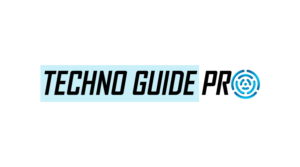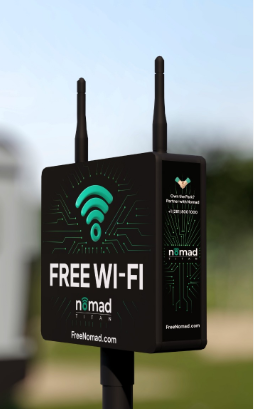Protecting your WordPress website is crucial in the ever-evolving digital landscape of today, and this process begins with a solid security plan. Come explore WordPress security, SEO best practices, and the continuous battle against hackers gaining unauthorized access in-depth. It’s critical to fortify your WordPress website’s defenses against the many threats that arise in the online world as it grows its online presence.
Prepare for a transformative adventure that equips you with the expertise and resources needed to fortify your WordPress stronghold and repel unauthorized access. In today’s digital landscape, where knowledge is both influential and precarious, our guidance acts as your guiding star through the expansive realms of WordPress security, SEO expertise, and resilience against cyber risks. As your WordPress platform evolves, so must its safeguards. Join us in uncovering unconventional strategies and methods to safeguard your online identity and enhance its effectiveness.
Strengthening Passwords, Two-Step Authentication, and Proactive Security Measures
Ensuring the security of your WordPress login form is essential in order to prevent unauthorized access and thwart potential hacker threats. To begin, it is important to establish strong and unique passwords for user accounts, which will increase resilience against brute force attacks. Additionally, consider implementing a two-step authentication process to add an extra layer of security, requiring users to provide a secondary verification method. It is crucial to regularly update your WordPress installation, along with plugins and themes, in order to address vulnerabilities that could be exploited by malicious entities. For further protection, explore security measures that temporarily lock down login attempts after a certain number of failures, reducing the risk of unauthorized access.
The Crucial Role of Scanning, and Backups
Regularly monitoring your website and establishing strong backup protocols are essential elements of maintaining a smoothly operating and secure WordPress site. Checking your site for vulnerabilities is like conducting regular health check-ups, enabling you to detect and address potential issues before they become serious. It’s important to remain alert to new threats and ensure that your site’s security measures are current and robust.
Creating backups for your WordPress site is like creating a safety net for your digital assets. In case of unexpected issues such as hacking attempts, software malfunctions, or human errors, having a dependable backup means you can quickly restore your site to its optimal condition. This not only safeguards your data but also reduces downtime and potential revenue loss.
The WP Reset plugin is crucial in this process, providing a complete solution to speed up site deployment, simplify testing environments, and enable easy recovery. With its ability to efficiently control, reset, and restore the WordPress environment with just one click, the plugin offers a valuable tool for streamlining site management. This functionality is especially beneficial for developers and site administrators, greatly improving their capacity to maintain a secure and well-functioning WordPress website. As the digital environment continues to evolve, it’s essential to adopt proactive measures such as regular scanning and strong backups to ensure a resilient and high-performing online presence.
Elevating Website Security Through SSL, Maintenance Modes, and Proactive Measures
Implementing a comprehensive strategy to enhance your website’s security is essential, requiring careful consideration of various critical elements. One crucial step is to activate maintenance mode, which is vital for addressing security issues and updating content without exposing vulnerabilities.
This ensures a secure environment for necessary fixes while protecting against potential threats. Additionally, obtaining an SSL certificate is essential for building user trust and safeguarding sensitive information by encrypting data transmitted between the user’s browser and your server. Another important measure is to eliminate broken links, which not only impact user experience but also create potential entry points for attackers. Regularly auditing and fixing broken links can contribute to a seamless browsing experience and reduce the risk of exploitation.
Employing strong user authentication methods, such as two-factor authentication (2FA), provides an extra layer of protection against unauthorized access attempts. This additional security measure significantly enhances the defense of your website, reducing the risk of successful attacks. It is essential to regularly update your website’s software, plugins, and themes to maintain a secure online presence.
Outdated components are vulnerable to known security flaws, making them potential targets for cyber threats. Implementing automated updates or following a systematic update schedule can streamline this process while ensuring the resilience of your site. Performing regular security audits and vulnerability assessments allows you to proactively identify and rectify potential weaknesses. These assessments offer valuable insights into areas that need improvement, empowering you to strengthen your website against evolving cyber threats.
Improving the security measures of your website requires a comprehensive approach that addresses several key areas. Firstly, activating maintenance mode is essential for addressing security issues and updating content without exposing vulnerabilities to potential threats. This ensures a secure environment for necessary fixes. Securing your website with an SSL certificate is crucial for building user trust and protecting sensitive information by encrypting data transmitted between the user’s browser and your server.
Removing broken links is also vital for strengthening your site’s security, as they can provide entry points for attackers and impact user experience. Regularly auditing and fixing broken links contributes to a smoother browsing experience and reduces the risk of exploitation. Implementing strong user authentication mechanisms, such as two-factor authentication (2FA), adds an extra layer of defense against unauthorized access attempts, significantly enhancing your website’s security posture and reducing the likelihood of successful attacks. Additionally, for optimizing user navigation and experience, consider utilizing the WP Sticky plugin that effortlessly makes any element on your website sticky—be it a header, menu, navigation, or widget—enhancing overall site usability and engagement.
Implementing web application firewalls (WAFs) enhances security by filtering and monitoring HTTP traffic between your website and the Internet. WAFs play a crucial role in preventing malicious activities and addressing various cyber threats. Educating your team and users about cybersecurity best practices promotes a culture of awareness and responsibility. Regular training sessions can empower individuals to identify and address potential security threats, reducing the risk of falling prey to phishing attacks or social engineering.
Lastly, it is essential to maintain a comprehensive and well-documented security policy tailored to your website’s specific requirements. This policy should cover all security measures, response protocols, and ongoing monitoring strategies, establishing a proactive and resilient security framework. For enhancing transparency and user engagement, consider incorporating the WP Author Box plugin. This versatile tool helps you add a customizable responsive author box anywhere on your site, showcasing the author’s name, gravatar, description, and much more, enriching the overall user experience.
Final Words
In conclusion, fortifying your WordPress website against evolving cyber threats is an ongoing and multidimensional journey. From bolstering login security and implementing SSL certificates to employing maintenance modes during updates, the importance of a robust security strategy cannot be overstated.
Regular scanning, reliable backups, and proactive measures, such as the use of plugins like WP Sticky and WP Author Box, contribute to a resilient and high-performing online presence. As the digital landscape continues to evolve, embracing these practices ensures not only the security but also the success of your WordPress platform in the dynamic and ever-changing online realm. Strengthen, enhance, and succeed in mastering WordPress security, SEO effectiveness, and resilience against cyber threats.





